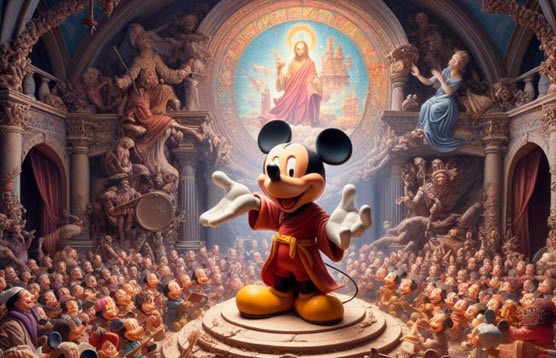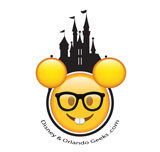Disney isn’t just a brand; it’s a cultural juggernaut that has left an indelible mark on the global stage. Let’s cut through the fairy dust and explore the roots of Disney’s cultural impact around the world.

Disney’s journey from a small animation studio to a global phenomenon is a testament to its universal appeal. It started with a mouse, but it became much more—a cultural force that resonates from Tokyo to Timbuktu.
How Disney’s Storytelling Transcends Cultural Barriers
Stories have the power to transcend languages and borders. Disney’s storytelling prowess isn’t bound by geography.
Whether you’re in New York or Nairobi, the emotional arcs of Disney tales strike a chord. It’s not about delving into complex narratives; it’s about creating stories that tug at the heartstrings, universally.
The Role of Iconic Characters in Forging Universal Connections
Mickey, Cinderella, Simba—they’re not just characters; they’re global citizens. These icons go beyond entertainment; they’re cultural ambassadors.
The simplicity of Mickey Mouse’s silhouette or the resilience of Disney princesses speaks to people worldwide. It’s not about delving into the vast intricacies of character development; it’s about creating figures that become friends, no matter where you are on the map.
Disney’s universal appeal isn’t about grandiosity; it’s about simplicity, relatability, and the magic of shared experiences.
In the next sections, we’ll unravel how Disney’s influence extends beyond entertainment, making its mark on education, societal values, and even economic landscapes. Stay tuned as we navigate the enchanting reach of Disney’s global impact.
Disney’s Impact on Education Through Entertainment
Now, let’s strip away the glitz and glamour, and take a closer look at Disney’s role beyond mere entertainment. Brace yourself for the impact Disney has had on education, diversity, and even language learning.
Learning doesn’t always happen within the four walls of a classroom. Disney has been a silent but powerful teacher, imparting life lessons, values, and sparking curiosity.
From the circle of life in “The Lion King” to the importance of perseverance in “Finding Nemo,” Disney stories aren’t just animated; they’re educational tools, teaching kids (and let’s be honest, adults too) about life, friendship, and the power of self-belief.
Promotion of Diversity and Inclusion in Recent Years
Disney’s narrative has evolved, and it’s not just about glass slippers and fairy godmothers anymore. In recent years, the House of Mouse has been on a mission to redefine its narrative, embracing diversity and inclusion.
Characters are no longer confined to a cookie-cutter mould; they represent a spectrum of backgrounds and perspectives. It’s not about ticking boxes; it’s about reflecting the richness of the real world.
The Influence of Disney Media on Language Learning and Cultural Exchange
Remember how you first learned about “hakuna matata” or that “belle” means beauty in French? Disney isn’t just a language-neutral storyteller; it’s a language teacher.

Through catchy tunes, enchanting narratives, and characters speaking in various tongues, Disney inadvertently becomes a gateway to language learning. It’s not a classroom, but it’s an immersive experience, fostering cultural curiosity and exchange.
In the upcoming sections, we’ll venture into Disney’s economic footprint, exploring how it not only creates magic on screen but also impacts global tourism, job markets, and consumer culture. Keep your seatbelts fastened; the journey is getting even more interesting.
The Magic Kingdom’s Economic Footprint
Enough with the fantasies; let’s talk cold, hard numbers. Disney isn’t just in the business of storytelling; it’s a global economic powerhouse. Buckle up as we dissect Disney’s economic impact on global tourism, local economies, and the intricate dance it does with the global consumer culture.
Disney’s Effect on Global Tourism and Local Economies
If you’ve ever seen a line winding through Disneyland, you know it’s not just magic that keeps people coming. Disney is a tourism magnet, drawing millions from every corner of the globe.
From Disneyland Paris to Tokyo DisneySea, these parks aren’t just attractions; they’re economic engines for the surrounding areas. Hotels, restaurants, and local businesses all ride the coattails of Disney’s popularity, turning nearby regions into bustling hubs.
Employment and Economic Opportunities Spurred by Disney
It’s not just about the ears and smiles; it’s about jobs and economic upliftment. Disney isn’t just a creator of enchanting tales; it’s a creator of jobs. From the person in the Mickey suit to the tech wizard behind the scenes, Disney employs a small army.
These jobs aren’t just about making dreams come true; they’re about putting food on the table and fuelling local economies.
The Interplay Between Disney Merchandise and Global Consumer Culture
Ever wondered why your niece won’t put down that Elsa doll or why you suddenly need a mug with Mickey’s face on it? That’s not just a whim; it’s Disney’s masterstroke in the global consumer culture game.
The interplay between Disney merchandise and our wallets is no accident. From themed clothing to collectibles, Disney isn’t just selling products; it’s selling a piece of the magic. And we willingly buy in because, well, who can resist the allure of a little Disney in their everyday life?
In the next section, we’ll tackle the not-so-magical aspects—the criticisms and challenges Disney faces in its global conquest. Stick around; we’re about to break the enchantment for a moment of reality.
Challenges and Criticisms: A Balanced Perspective
We’ve gushed about the magic, the economic prowess, but let’s bring a dose of reality into the enchanted kingdom. Disney, for all its glory, isn’t exempt from scrutiny. In this section, we’ll address the critiques, scrutinizing the accusations of cultural imperialism and examining how Disney navigates the representation of diverse cultures in its narratives.
Addressing the Critiques of Cultural Imperialism
Disney, with its far-reaching influence, has faced accusations of cultural imperialism. Some argue that Disney’s global dominance may lead to the homogenization of cultures.
We can’t ignore these claims. It’s not about tearing down the castle; it’s about acknowledging the concerns and dissecting the reality of Disney’s influence on diverse cultural landscapes.
Analysing the Representation of Different Cultures in Disney Narratives
From Aladdin’s Agrabah to Mulan’s China, Disney has taken us on cultural journeys. But how accurately are these cultures represented?
Critics argue that Disney often simplifies and stereotypes cultures, reducing them to catchy songs and exotic backdrops. We’ll dissect these claims and see where the line between representation and distortion lies.
The Evolution of Disney’s Approach to Cultural Sensitivity and Authenticity
Disney isn’t frozen in time; it’s a dynamic entity that evolves. In recent years, there’s been a noticeable shift in Disney’s approach to cultural sensitivity and authenticity.
Whether it’s casting decisions, storylines, or cultural consultants, Disney seems to be listening. It’s not about erasing past missteps; it’s about learning and adapting.
In the final stretch, we’ll wrap up our exploration, tying together the enchantment, the economics, and the critiques. Disney, for all its wonders, is a complex tapestry, and it’s time to appreciate it in its entirety.
Conclusion: Disney’s Global Impact Unveiled
In the grand tapestry of global entertainment, Disney emerges as a vibrant thread, weaving through cultures, economies, and imaginations. Our journey through Disney’s domain has been one of enchantment, economic marvels, and critical scrutiny.
Disney’s universal appeal is no accident; it’s rooted in timeless storytelling that transcends borders. From the humble mouse to a global phenomenon, Disney forges connections that know no boundaries.
Yet, beyond the magic lies a reality we can’t ignore. Disney’s economic impact on tourism, local economies, and consumer culture is undeniable, generating smiles and jobs alike. However, it doesn’t shield Disney from scrutiny.
Addressing critiques of cultural imperialism, we’ve looked into Disney’s portrayal of diverse cultures. From stereotypes to a more nuanced approach, Disney reflects an evolving commitment to cultural sensitivity.
Disney isn’t a perfect fairy tale; it’s a complex narrative with highs and lows, cheers and critiques. As we close this chapter on Disney’s global impact, let’s appreciate the magic, economic ripples, and strides toward inclusivity. Whether you’re a fan or observer, Disney’s cultural footprint is undeniable.
So, here’s to the enchantment, the debates, and the enduring magic of Disney across generations. It’s a small world, and Disney has made it a bit brighter for us all.
